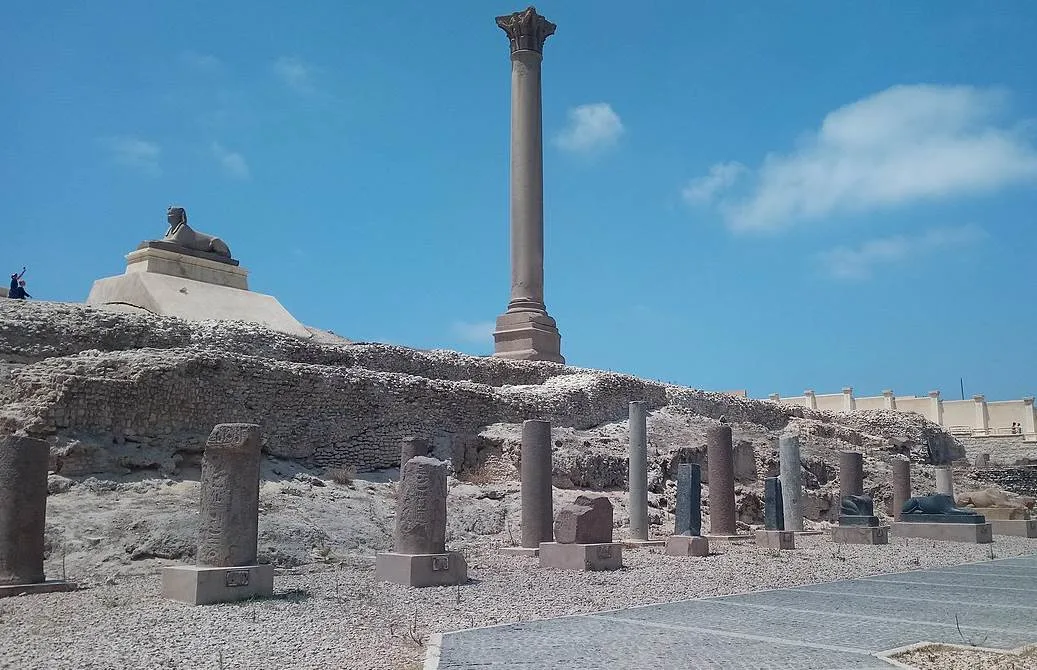When you think about architecture in Egypt, the first things that come to mind are temples and pyramids, right?
Egypt became a province of the Roman Empire in 30 B.C., the year that Roman Emperor Augustus defeated Marcus Aurelius and Queen Cleopatra, the final ruler of Egypt.
It was part of the Roman Empire for many centuries and the Romans definitely left their mark on this part of North Africa during this time.
One of the most fascinating ancient monuments stands in Alexandria, the important port city in Egypt that was founded by Alexander the Great in 331 B.C.
In this article, you’ll discover some of the most interesting facts about Pompey’s Pillar, a fascinating landmark in Egypt with a remarkable story to tell.
1. It stands next to the ruins of an ancient Greek temple in Alexandria
Pompey’s Pillar is the name of a massive victory column that was built in the Egyptian city of Alexandria. It stands right next to the ruins of the Serapeum of Alexandria.
This was an ancient Greek temple that was constructed during the Ptolemaic Kingdom. It was commissioned by Ptolemy III Euergetes, a man who reigned between 246 and 222 B.C.
Both the column and the temple were constructed on a rocky plateau in the heart of the modern-day city, a few kilometers directly south of the citadel of Alexandria and the Old Port.
What was once the main temple of the Greek quarter of the city has been reduced to rubble. It was heavily plundered in ancient times and never rebuilt.

2. It was erected in honor of Roman Emperor Diocletian in the early 4th century

By the end of the 3rd century A.D., the Roman Empire had become so big that Roman Emperor Diocletian divided it into a Western and Eastern part. He also appointed co-emperors below him in 286 A.D.
This didn’t refrain ambitious fortune seekers from trying to gain control of certain parts of the empire. One of these was Domitius Domitianus, a man who tried to conquer Egypt in 297.
Diocletian was alarmed and sent his troops to Alexandria who besieged the city. The resistance didn’t last long and Domitianus’s successor Aurelius Achilleus was captured and executed a year later in 298.
The column was commissioned by the “Praefectus Aegypti” or “Governor of Egypt” named Publius and dedicated to Diocletian’s suppression of this revolt.
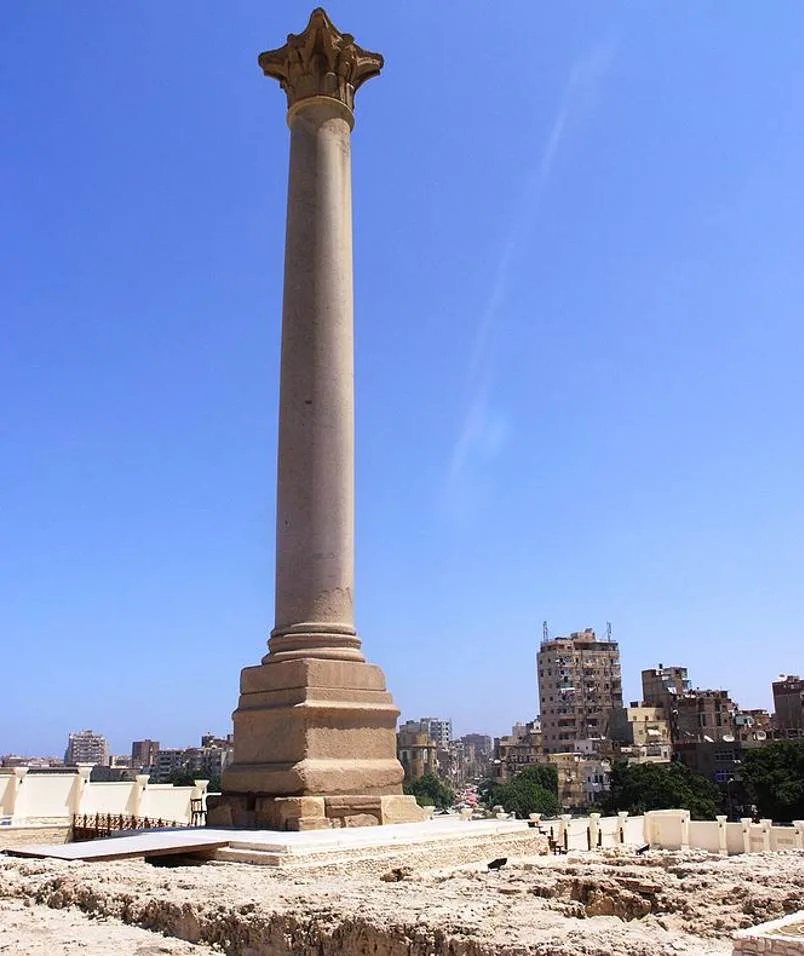
So why is this large pillar called Pompey’s Column anyway?
The reason is a mistake made by early researchers in modern times who misread the inscription at the base of the column.
Granted, you can hardly read this inscription anymore because it’s well over 1,700 years old by now. We did figure out, however, that it doesn’t relate to Republican general Pompey from the 1st century B.C.
ΠΟΥΠΛΙΟΣ means Pouplios but was read ΠΟΜΠΗΙΟΣ or Pompeius. An honest mistake because the name is barely visible.
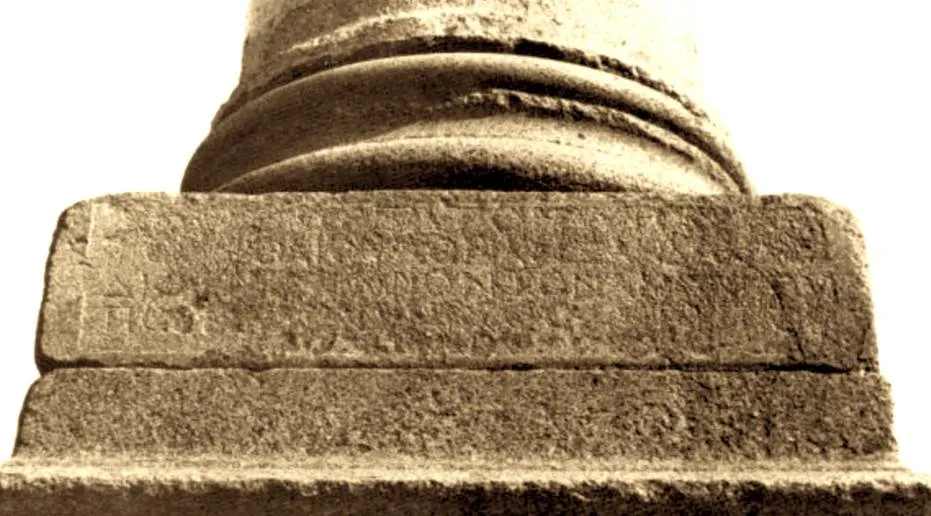
4. How tall is Pompey’s Column in Alexandria?
Both the base and the column’s shaft itself are of lapis syenites, a type of pink granite that was quarried at modern-day Aswan in the utmost southern part of Egypt.
The column’s capital, which resembles the Corinthian style, is different as it’s made of a type of grey granite.
It’s a massive structure that reaches a height of 26.85 meters (88.1 feet). This makes it the tallest ancient Roman monument in Egypt that still stands in its original location today.
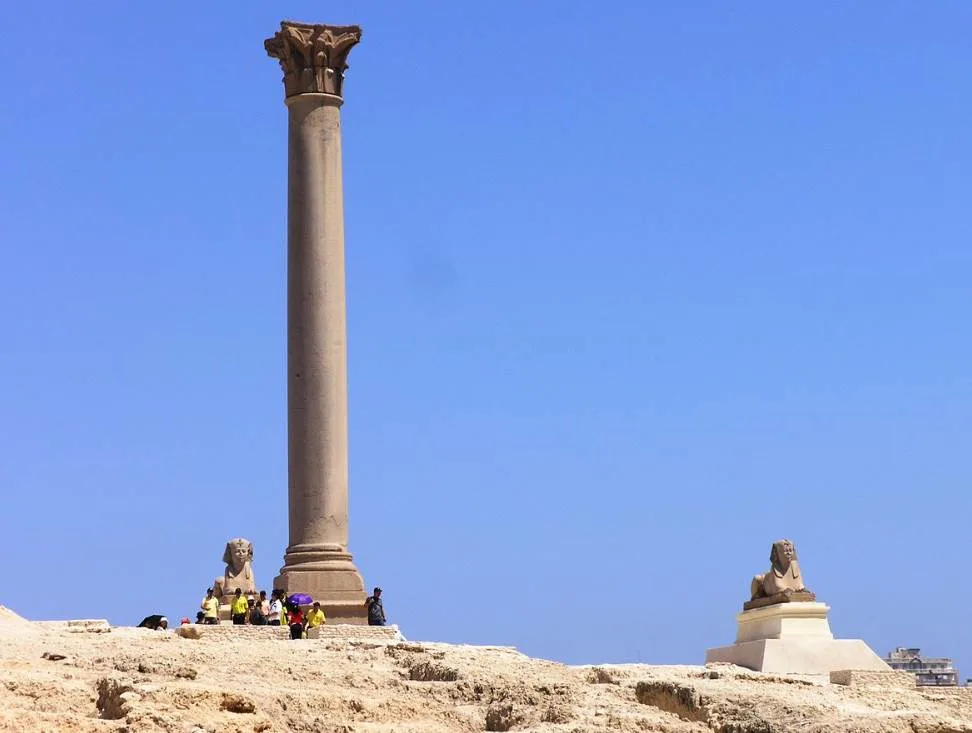
5. The pillar’s height isn’t its only dazzling statistic
The height of the column is pretty impressive, and here are some more interesting statistics about Pompey’s Pillar:
- Shaft height: 20.46 meters (67.1 feet)
- Column diameter: 2.71 meters (8.89 feet)
- Base height: 6 meters (20 feet)
- Shaft weight: 285 tonnes

6. The shaft of the column is unique for a specific reason
Perhaps you already noticed but there seems to be something special about the column’s shaft. It’s very smooth which indicates that it’s made of one piece.
Yes, that’s right, the immense shaft of the column doesn’t consist of blocks stacked on top of each other but was actually shipped here from southern Egypt in one piece.
We can only imagine the endeavor of lifting this column (which weighs 285 tonnes) into position without the use of modern equipment.
This type of column is referred to as a “Monlythic Column” and Pompey’s Pillar was the largest of its kind to be erected in ancient Egypt.
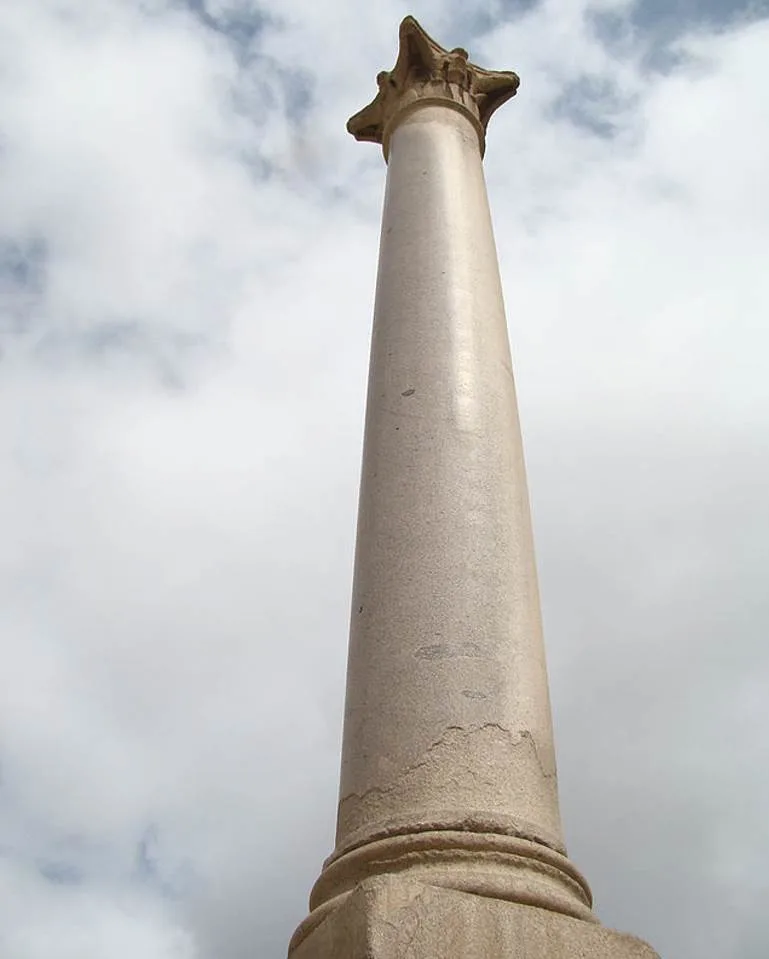
7. The column was once topped with a massive sculpture of the emperor
Governor Publius surely wanted to impress Emperor Diocletian, that’s for sure.
Not only did he commission the only monolith column ever built in ancient Egypt, but he also added a cherry on top for his boss.
The column was once topped with a huge porphyry statue of Emperor Diocletian in shining armor. This statue had a height of approximately 7 meters (23 feet) which brought the total height to 33.85 meters (110.05 feet).
Part of the sculpture’s thigh was found with a length of 1.6 meters (5.24 feet) so we can calculate how big it really was.
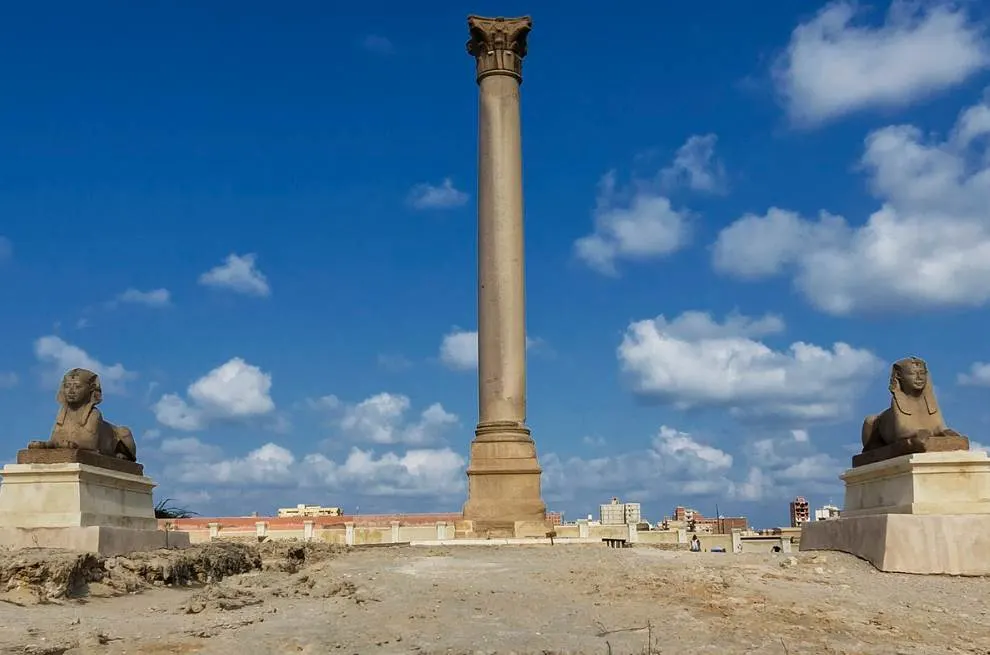
8. It was probably accompanied by two supporting columns in ancient times
Opinions are divided but it’s likely that Pompey’s Pillar wasn’t the only monument that was erected a the time.
After all, Diocletian had transformed the Roman Empire into a Tetrarchy, ruled by 2 emperors and two vice-emperors.
It’s possible that the column was accompanied by a similar column that commemorated his co-emperor Maximiam and the two so-called “Caesars” Constantius and Galerius.
